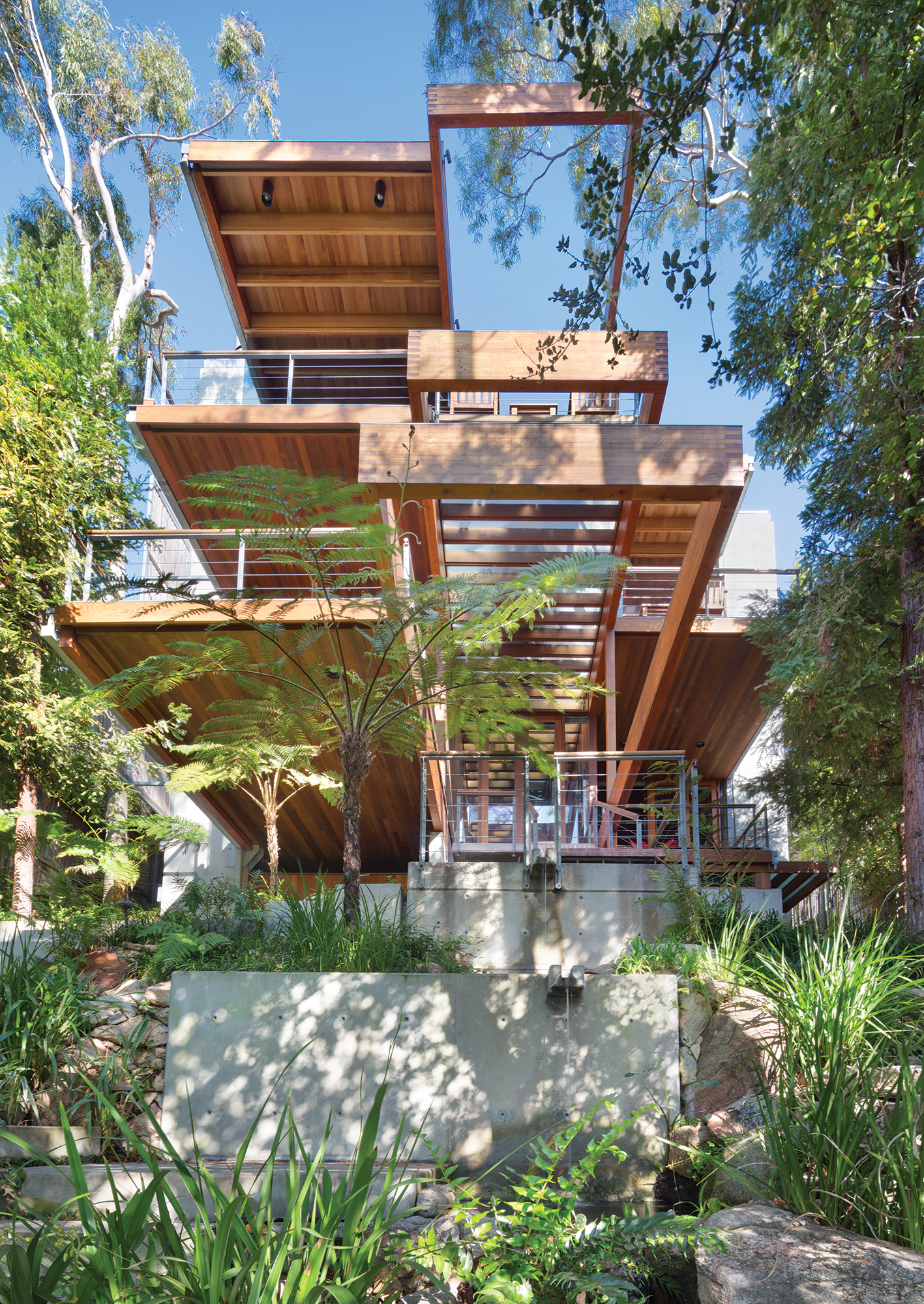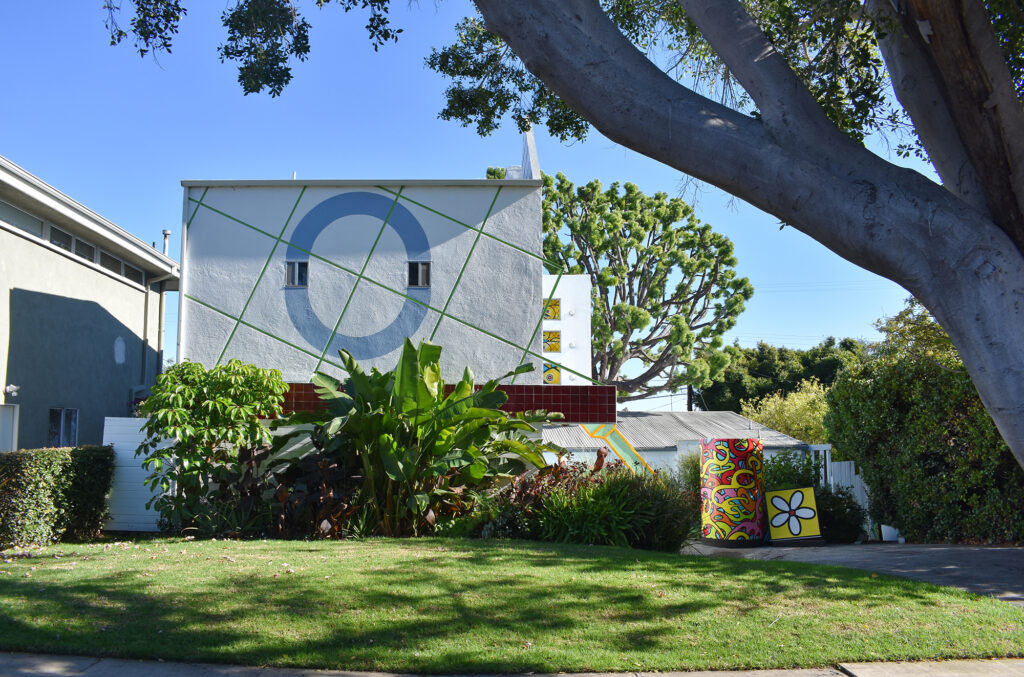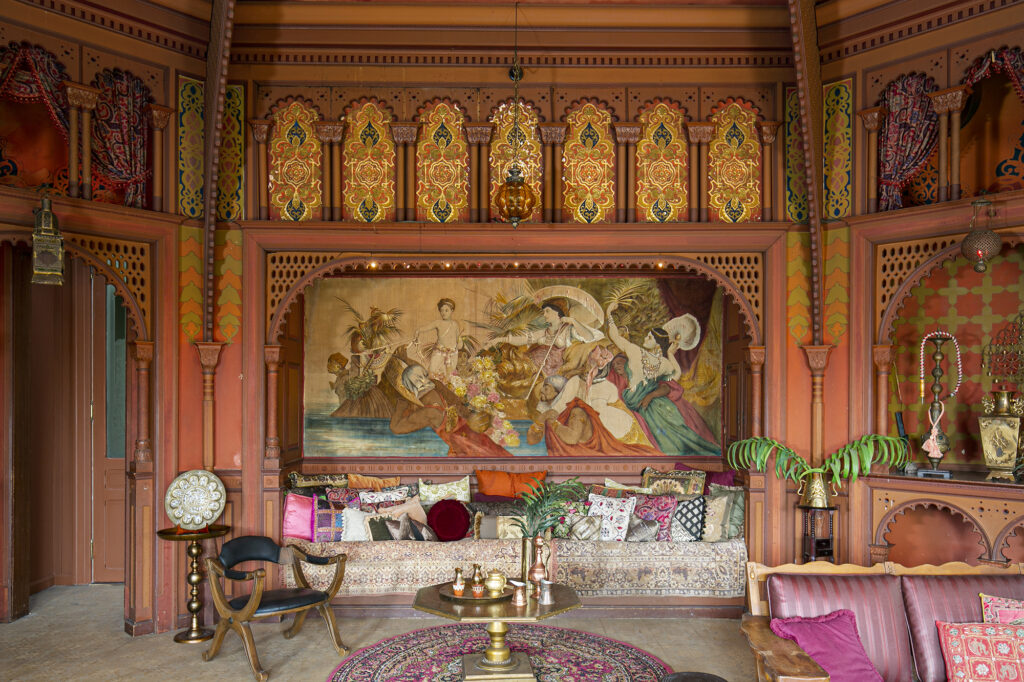
An 8-Point Plan for Preserving and Redefining L.A.’s Architectural Legacy
Jaime Rummerfield of Save Iconic Architecture on how to preserve the past and rebuild with culture integrity.

Zane Grey Estate; Photo by Susan Pickering Photography
“I drive on her streets because she is my companion. I walk through her hills because she knows who I am.” These words, sung by Anthony Kiedis of the Red Hot Chili Peppers, encapsulate the unique, almost living relationship many Angelenos have with their city. Los Angeles is more than just a place—it’s a spirit, a presence, an identity that we, in turn, mold and are shaped by. To know her is to be swept into a world of complexities, contradictions, and, above all, a vibrant energy that rewards those who engage with her wholeheartedly.

Tim Street-Porter
But Los Angeles is more than just its magnetic energy. The city is adorned with a rich and diverse architectural heritage that tells the story of her evolution and spirit. We see the fingerprints of pioneers like Wallace Neff, Myron Hunt, and Elmer Grey, who crafted the Spanish colonial revival homes that define some of L.A.’s most coveted neighborhoods. We see the refined lines of Paul R. Williams’ colonial revival style, or the sweeping ranch estates that blend seamlessly into California’s natural beauty. We look at the works of Richard Neutra, Pierre Koenig, and Rudolph Schindler, whose modernist innovations challenged convention and forever changed the way we think about architecture. We see John Elgin Woolf’s Hollywood regency glamour, Ray Kappe’s sleek, forward-thinking designs, and A. Quincy Jones’ timeless modern masterpieces.
Yet, this incredible heritage is not being given the respect and protection it deserves. Unlike other cities with robust preservation programs, Los Angeles lacks the resources and leadership to safeguard its architectural legacy. Los Angeles’ architecture is not just a series of buildings—it is the story of who we are and where we came from. It is as much a part of our identity as the people who call this city home.

Susan Pickering Photography
The devastating wildfires that ravaged the Palisades, Altadena, and Pasadena weren’t just natural disasters—they were cultural catastrophes. Alongside the heartbreaking and devastating loss of life, home, and communities, we witnessed the destruction of irreplaceable architectural treasures. The Freedman, Hees, and Kesler Houses, all designed by Neutra, exemplified his philosophy of merging indoor and outdoor living. Ray Kappe’s Keeler House, with its bold cantilevered forms and warm materials, was a triumph of structural ingenuity and livability. Altadena suffered profound losses, including the Andrew McNally House by Frederick Roehrig, a Queen Anne treasure and testament to the grandeur of turn-of-the-century design. The Zane Grey Estate, a landmark steeped in literary history, and Scripps Hall, a spiritual and architectural icon, were beacons of the area’s rich cultural heritage. Closer to the coast, the Bridges House, visible from Sunset Boulevard, stood as a quiet sentinel of craftsmanship, designed and built by Robert Bridges himself. And the Will Rogers Ranch House was not just a home but also a living symbol of community and storytelling.

Courtesy of California State Parks/© California State Parks. All rights reserved.
We must act now to preserve what remains. We need a dedicated effort to protect the memory of our past to ensure future generations can experience the same sense of wonder inspired by these architectural marvels.
A city without its art, culture, and history loses its identity.
As we plan to rebuild, we have an opportunity to not only restore what was lost but to reimagine it with reverence and care. Without a bold plan, we risk replacing our city’s soul with mediocrity. By rallying architects, designers, and community leaders, we can create a future that both honors our past and propels us forward. We can create a new era of California Classics—architecture that reflects the city’s resilience and respects its legacy. This eight-point plan is our blueprint for healing, rebuilding, and preserving the spirit of Los Angeles.

Michael Locke
1. Tap the Experts
To rebuild with integrity, gather the top creative minds in L.A. design, preservation, and innovation to establish a coalition. L.A. area architects like Tim Barber, Marc Appleton, and Barbara Lowenthal. Dynamic and quality builders such as I-Grace and Taconic. Preservation leaders like Russell Brown of FORT: LA and Adrian Scott Fine of the Los Angeles Conservancy. Palisades and Altadena preservation committees and historians such as Charlie Fisher and Katie Horak. Network organizations like the Design Leadership Network, in addition to top shelter publications.
2. Involve the Community
The homes we’ve lost were more than structures—they were the keepers of memories, traditions, and lives. As we rebuild, we must listen to the communities who lived there, preserving the essence of what made these spaces special. Architecture can be a bridge between the past and the future, carrying forward the spirit of those who called these places home. Pacific Palisades was built with an emphasis on integrating structures into its dramatic landscape of ocean views, rugged cliffs, and lush canyons. Development in the 1920s was influenced by Mediterranean and Spanish colonial revival styles. Altadena, a picturesque multicultural community nestled in the foothills of the San Gabriel Mountains, has a rich architectural heritage, vibrant artistic community, and deep African American history. Its architectural styles reflect the evolution of Southern California design, with Craftsman bungalows, Tudor revivals, and Spanish colonial revivals.

Julius Shulman Photography Archive/© J. Paul Getty Trust. Getty Research Institute, Los Angeles (2004.R.10)
3. Raise the Standard
Reject the soulless, cookie-cutter developments that diminish our city’s character. Demand quality materials, fireproof engineering, and meaningful design that blends beauty with safety. Design review boards and higher community standards are essential to ensure that what is built reflects L.A.’s creative legacy.
4. Look to the Landmarks
Only about 3% of L.A. buildings have landmark status, as the process requires building owners to navigate extensive bureaucratic hoops to achieve Historic-Cultural Monument designation. Identify and protect the architectural treasures that are the North Star for how we build going forward. Encourage citywide acknowledgment of these treasures’ status and fast-track landmarking efforts. Expand programs like the Mills Act, which provides tax incentives to preserve historic properties. Promote these programs broadly and make them more accessible and more easily navigable.

Susan Pickering Photography
5. Empower Preservation Leadership
Look to cities such as Charleston, New York City, and Savannah that take their architectural and historical significance with departments and officials that mandate preservation. Create a Chief Preservation Officer position and a well-funded Preservation Department to ensure L.A.’s architectural treasures are prioritized alongside other civic needs. Advocate for leaders like Ken Bernstein from the Office of Historic Resources and City Council members such as Traci Park in neighborhood jurisdictions to take more prominent roles and push for actionable preservation and design-minded policies.
6. Stop Blind Demolition
Policies must bridge the gap between SurveyLA documentation of historic properties and the permitting process to prevent reckless demolitions. Utilize SurveyLA, a comprehensive documentation of notable properties in L.A. that highlight the city’s rich architectural resources. Creative solutions, such as tying demolition permits to a database of historical properties flagged by the Office of Historic Resources, could help prevent further losses.

Trevor Tondro/OTTO
7. Raise Awareness and Funds
Organizations like Save Iconic Architecture and the Los Angeles Conservancy are vital to raising public awareness and funding preservation efforts. Until the city commits budget to preservation, community-led initiatives are essential to protect L.A.’s heritage.
8. Democratize Historical Design
Professional organizations of architects and interior designers should work together to develop free practical guides for homeowners, developers, and architects to design with the legacy of L.A. architecture in mind. Provide floor plans, elevations, material lists, and resources to obtain finishes, lighting, fixtures, and other decorative materials that reflect the principles of Mediterranean revival, Spanish revival, California ranch style, midcentury modern, colonial revival, and Tudor style that define our landscape. Together, we can ensure that Los Angeles remains a beacon of creativity and architectural excellence—an exemplar for the world and a haven for idea-makers who call this city home. The New California Classics are waiting to be imagined. Let’s build them.

Michael Allen
Jaime Rummerfield is the owner of Jaime Rummerfield Interior Design and co-founder of nonprofit organization Save Iconic Architecture, dedicated to safeguarding Southern California’s architectural and cultural treasures. Jaime has worked on the restoration of landmark properties by Richard Neutra, Gordon Kaufmann, and Paul R. Williams. Through SIA, Jaime has successfully championed efforts to save the Standard Hotel on Sunset Boulevard and Marilyn Monroe’s Brentwood home.
